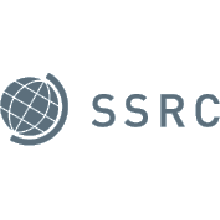COMPETITIVE STRATEGIES AND MICROFINANCE BANKS IN NAIROBI CITY COUNTY, KENYA
COMPETITIVE STRATEGIES AND MICROFINANCE BANKS IN NAIROBI CITY COUNTY, KENYA
Gregory Kiprono Bii - Master of Business Administration (Strategic Management), Kenyatta University, Kenya
Evans Mwasiaji (PhD) - Lecturer, Department of Business Administration, Kenyatta University, Kenya
ABSTRACT
Microfinance Banks globally play a critical role of intermediation by facilitating efficient distribution of financial resources and achievement of monetary policy required for social and economic growth. Given this important function by microfinance institutions that target people especially at the lower levels of the economic ladder, it is imperative for policy makers and other stakeholders to direct real efforts towards ensuring that the said entities remain operational above the statutory requirement, so as to service their financial obligations as they fall due. In Kenya, the year 2021 Central Bank supervisory report indicate a combined loss before tax of Kshs. 877 million as at December 31, 2021, compared to a loss of Kshs.2.2 billion as at December 31, 2020. During the period under review, the microfinance sector closed 28 marketing offices, thus reducing the total number to 63 from 89 in 2020. Using Return on Equity as a metric, their profitability had previously reduced from 27.1% in year 2015 to 25% in 2016. Using Return on Assets as an indicator, the index reduced from 26% in 2015 to 25% in 2016. The Banks’ market share reduced to 0.79% in year 2018, as compared to 1.05% in 2014, mostly attributed to increased competition and poor strategic positioning in the market. This made it necessary for Microfinance Banks to review and adjust their business level strategies with a view to enhancing performance. This study therefore sought to examine the operationalized competitive strategies and their influence on the performance of Microfinance Banks in Nairobi City County, Kenya. The Balanced Score card was used to anchor the study, supported by the Dynamic Capabilities theory. The unit of analysis was all the thirteen licensed deposit taking Microfinance Banks in Nairobi City County, while the unit of observation was purposively selected senior management staff in the Finance, Operations and Marketing functions. A structured questionnaire was used to collect relevant data that were analyzed using descriptive statistics, while inferential analysis was used in examining the nature of relationship between the variables. This study with an 84.7% response rate, established that Cost Leadership, Customer Focus and Differentiation Strategies had significantly influenced positively the performance of Microfinance Banks, thus facilitating further opening up of funding opportunities for the vulnerable to improve their living standards. The study recommends that Microfinance Banks should undertake stakeholder management, seek to analyze and exceed customer expectations especially on loan disbursement turnaround time, make their products more attractive by raising loan sizes, enhance loan facility maturity period, and seek to expand their non-interest income sources. The expected study output is improved performance by Microfinance Banks for economic recovery post Covid - 19.









